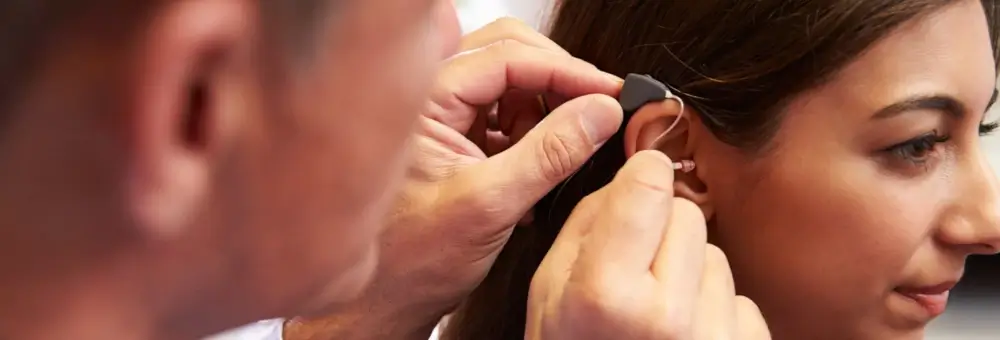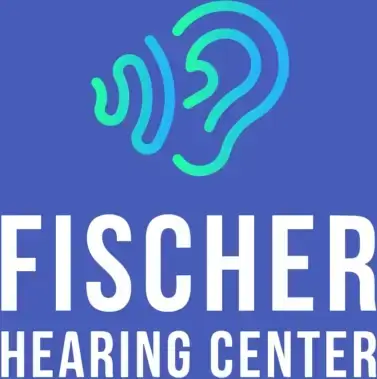
What's the process of a hearing aid fitting?
Hearing Aid Fitting
Today's hearing aids are remarkable how well they perform. They can be fine tuned to reduce background noise, synced to your phone, or even stream music. But hearing aids can only be at their best if they are properly fitted.
Fortunately technological advances in hearing aid design and performance in the audiology profession have led to significant improvements in the fitting of hearing aids over the past 2 decades. Paul can custom fit your new hearing aids with the following steps:
Evaluation
The initial step in the fitting of hearing aids is a comprehensive audiologic assessment. This evaulation is essential to determine the type and magnitude of hearing loss. Paul Fischer will go over your history with hearing loss, then if appropriate, administer one or more of the following tests:
- Audiometric Testing
This is a hearing test that is performed by Paul in a sound proof room. You will wear headphones connected to an Audiometric device that emits different sounds to one ear at a time. Each sound is different in volume and pitch. You will be asked to press a button each time you hear a sound. - Tympanometry Testing
Simply put, a Tympanometry tests how well your eardrum moves & responds. Paul will put a small probe, which looks like an earphone into each ear. Another small device attached to the probe will gently push air into each ear. Paul will show you a detailed graph of the results using what is called a tympanogram. - Otoacoustic Emissions Testing
Otoacoustic emissions testing is a more advanced way of hearing testing than Audiometry. Paul may perform this test for patients who cannot tolerate or complete conventional hearing tests like the Audiometric & Tympanometry evaluations.
Treatment Planning
After Paul completes the assessment process, he will review the findings with you and identify areas of difficulty and need. Based on this analysis, he will determine wether or not to recommend that hearing aids are the appropriate measure to improving your hearing.
Hearing Aid Fitting Orientation
If you decide hearing aids are right for you, next is getting your new hearing aids fitted. Paul will perform the following:
- Custom Fit
If applicable, Paul will use custom fitting measurements to ensure you new hearing aids fit perfectly. No fear of them falling out, no lack of sound due to not fitting incorrectly, and fit your ear comfortably. We can always schedule a follow up visit if further adjustments are needed. - Battery Management / Safety
Fortunatly hearing aids are relatively very safe to use and battery replacement and charging is too. Paul will go over all safety measurements with you. For more info on batteries, visit our Hearing Aid Batteries Page. - Hearing Aid Components
- - General usage & adjustments
- - Assistive listening device coupling
- - Telephone use
- - Safe storage
Melisa W.
Being 38 and admitting that I need a hearing aid was no easy obstacle to overcome, but Paul has changed my life drastically. By providing me with compassionate care and having patience with my reluctance to overcome my personal stigma of wearing a hearing aid, he was able to do what he does best and provide me with a hearing aid that is comfortable and fits my needs exactly. I did not realize how my hearing loss was negatively effecting my daily conversations; my family became frustrated with having to repeat themselves and my friends and colleagues were baffled by how I misunderstood what they said (because let's be honest, I was plugging in the missing words). Paul was able to give me the gift of meaningful conversations again because he is a professional with a giant heart. If you or someone you care about has noticed a hearing loss, know that by trusting Paul, you will improve your quality of life. I recommend Fischer Hearing Center with 100% confidence that you will get what you need in a friendly and professional environment.
Joyce C.
After dealing with a few different Hearing Aid establishments for my husband, I have to say Fischer Hearing Center, Paul Fischer and his staff outdo them all. Paul was extrememly helpful in educating us as well as going above and beyond to help my husband after a different establishment screwed up. I would highly recommend this office for anyone with hearing aid needs. Thank you Paul! See you soon.
